Discover the
Jefferson Highway
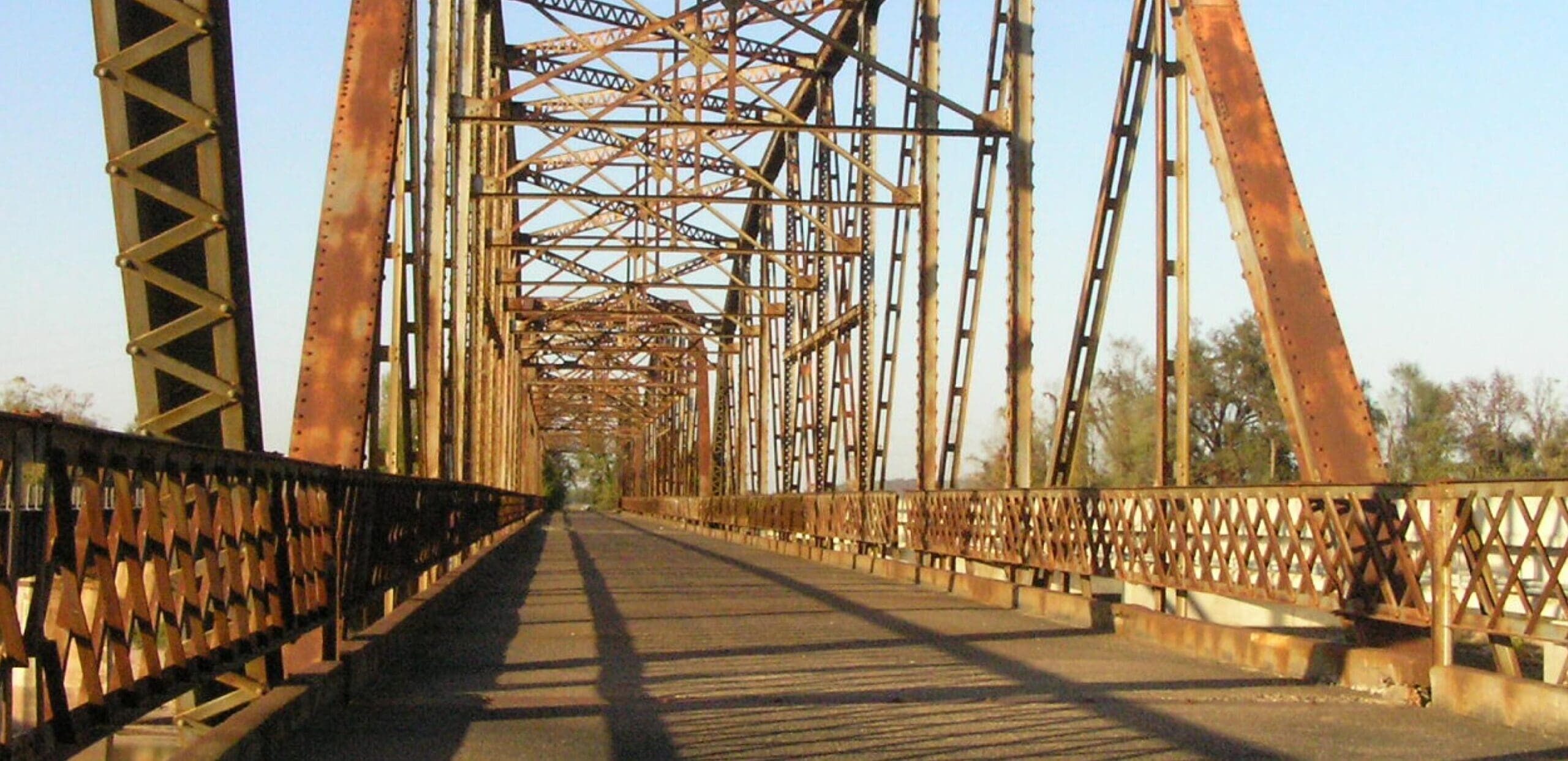
America’s “Pine to Palm” Route in Muskogee
A renewed interest in the historic Jefferson Highway has brought its rich legacy to light. The highway linked New Orleans, Louisiana to Winnipeg, Manitoba, and was built to improve access to the interior, northern parts of the U.S. Unlike federally constructed highways, the Jefferson Highway was a grassroots effort linking local roads between small towns, with each paying their share. Named in honor of Thomas Jefferson, it roughly followed the eastern boundary (Mississippi River) of the Louisiana Purchase.
The planning stages created strong competition between the towns along the proposed route. To no one’s surprise, heavy political influence became a contributing factor in its design, and as a result a zigzag highway plan emerged. The Jefferson Highway initially provided a tremendous boost to the nation’s emerging automobile industry, highway system, and tourism “from Pines of Winnipeg to the Palms of New Orleans”. We hope you enjoy the miles of history along your Jefferson Highway drive. Don’t forget to stop and take in the scenes as you go.
Cruise Through History
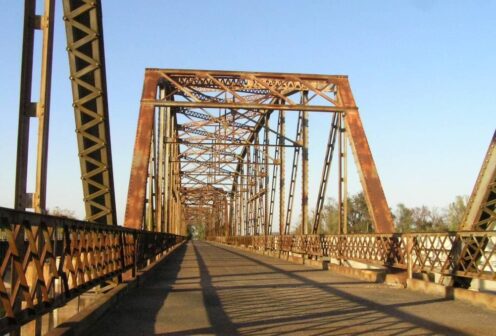
Arkansas River Bridge
Hwy OK-16, Muskogee, OK 74403
One of the most significant original bridge structures on the Jefferson Highway route is located just north of Muskogee.
In the early 1900s, planners and builders of the historic Jefferson Highway route were faced with many obstacles in route planning and needed appropriate bridge structures for automobiles and freight traffic. By 1915, both bridges near Muskogee were marked with Jefferson Highway signs and served as alternate routes for travelers navigating between Wagoner and Muskogee.
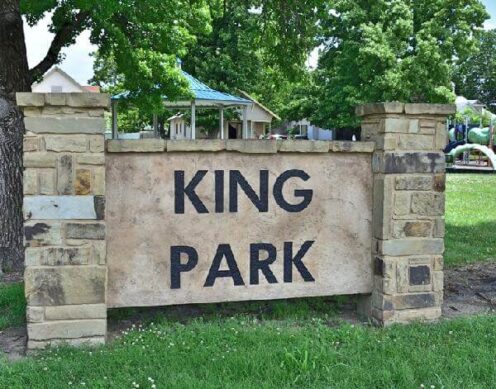
King Park
3301 Gibson St., Muskogee, OK 74403
This small park, created before the Jefferson Highway, sits at the historic intersection of Eastside Boulevard and Gibson Street, both integral to Muskogee’s early development.
Oklahoma’s push for better infrastructure began in 1906 with the formation of the Oklahoma Good Roads Association, supported by Charles N. Haskell, the state’s first governor, who recognized the economic importance of improved roads and helped advance efforts to establish the Jefferson Highway.
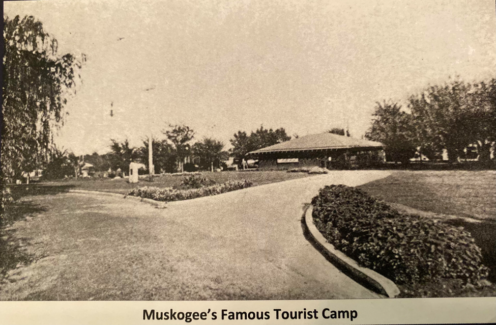
Spaulding Park
East Okmulgee Ave, Muskogee, OK 74403
In 1920, the Muskogee Kiwanis Club raised over $3,000 to create a tourist camp at Spaulding Park. It was completed in 1921 with modern amenities such as shower baths, restrooms, gas ranges, and dishwashing sinks. Muskogee’s Tourist Camp was truly considered a model to other Southwest camps and amongst the best of its kind on the Jefferson Highway route.
At its peak in 1926 it hosted over 8,000 tourists. However, declining travel during the Great Depression led to its closure. The site was later incorporated into Spaulding Park as public space.
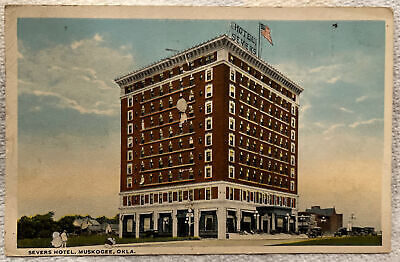
Severs Hotel
201 N. State St., Muskogee, OK 74401
In 1916, the vice president of the Jefferson Highway Association, David N. Fink offered to host the first annual meeting in his hometown of Muskogee. It was held in the ballroom of the Severs Hotel where the final routing for the Jefferson Highway was settled.
The Severs Hotel closed in 1975. Today, the Bank of Oklahoma still occupies the historic site and in 2015, the Severs Building celebrated 100 years of the highway.
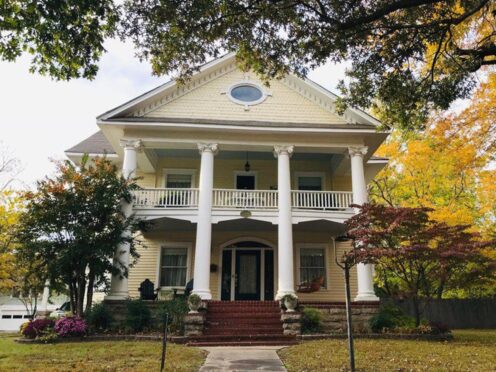
Jefferson Highway President’s Home
509 N. 12th Street, Muskogee, OK 74401
This home was once owned by Muskogee banker, David Fink and his wife, Lillian Fink.
He was a leader in the development of the Jefferson Highway and among many Muskogee delegates who went to New Orleans to fight for its routing through Oklahoma and Muskogee. He was subsequently elected president of the Jefferson Highway Association and was a primary host for its 1916 conference held in Muskogee.
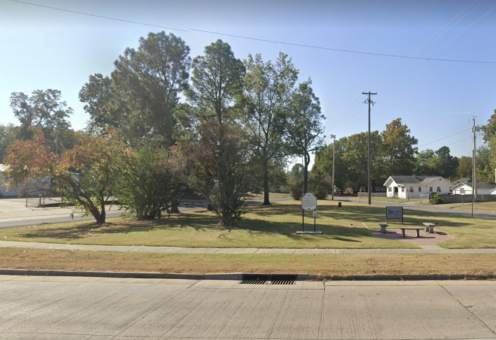
Habitat Park
2001 West Okmulgee Muskogee, OK 74401
The historic Jefferson Highway route was established in 1916 ranging over 2,400 miles from Winnipeg, Canada, to New Orleans, Louisiana.
It was one of the first North-South highway routes across the country. The route through Muskogee from the North came down York Street, turned down Gibson Street and then onto Eastside Boulevard where it turned onto Okmulgee Street and continued through the heart of downtown, past this location now known as Habitat Park and turned south on 24th Street.
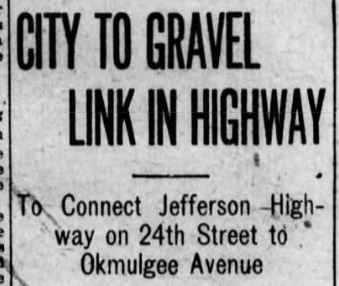
Marland Filling Station
24th and W. Okmulgee Ave., Muskogee, OK 74401
In 1907, James Anthis founded the Anthis Land Company in Muskogee, focusing on land development.
In 1925, he built a Marland Oil filling station at the Jefferson Highway turn at 24th Street and Okmulgee Avenue, operated by his son, James Everett Anthis. The station, which later became part of Conoco, served Jefferson Highway travelers and operated under various owners until the 1970s. Since then, the historic site has hosted several businesses.
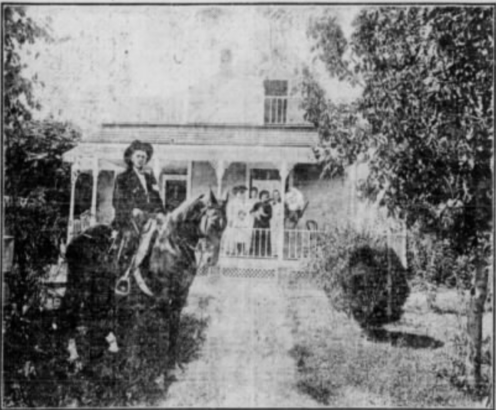
Rotary Park
564 S 24th St W, Muskogee, Ok 74401
In 1910, Muskogee purchased land from Charles and Josephine Higgins to establish its first westside park, later named Higgins Park. After Mr. Higgins’ death, nearby land was developed as the Jefferson Highway Addition, named for the new national route running along 24th Street.
After the 1917 paving tax improved the gravel roadway for increasing traffic, despite local opposition, businesses emerged along 24th Street, including filling stations, garages, tourist camp, and private airport. In 1925, the Pearson School for Exceptional Children was built across from the park and later renamed Rotary Park.
Jefferson Highway
While the original route is no longer designated as the Jefferson Highway, many of its roads remain in use. Historic highway enthusiasts and travel organizations continue to promote and celebrate the route’s history.
Yes! Travelers can still explore much of the original route using modern highways and local roads. Many towns, including Muskogee, have preserved their connections to the Jefferson Highway with historical markers and attractions.
Muskogee became a key stop along the Jefferson Highway, benefiting from increased tourism and trade. It contributed to the city’s early economic growth and strengthened its connection to other parts of the country.